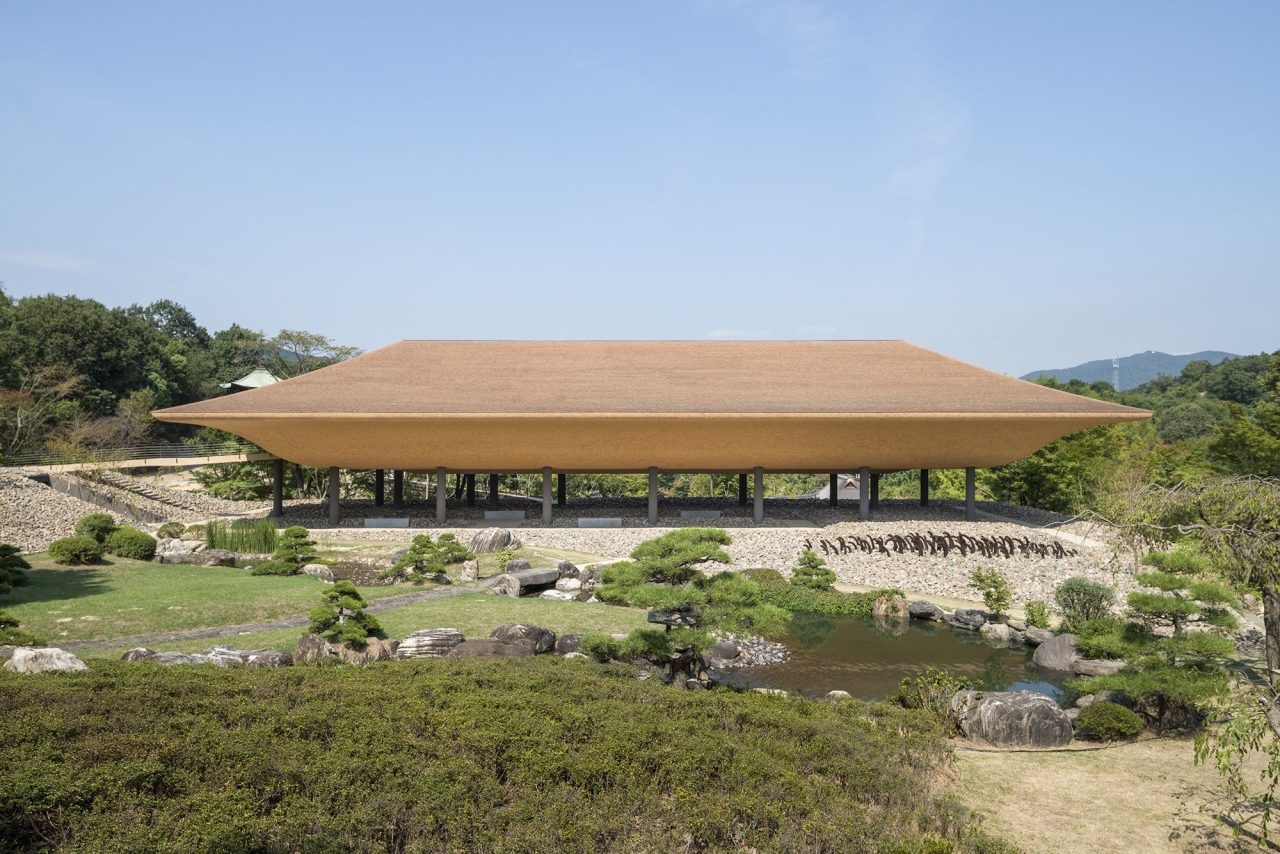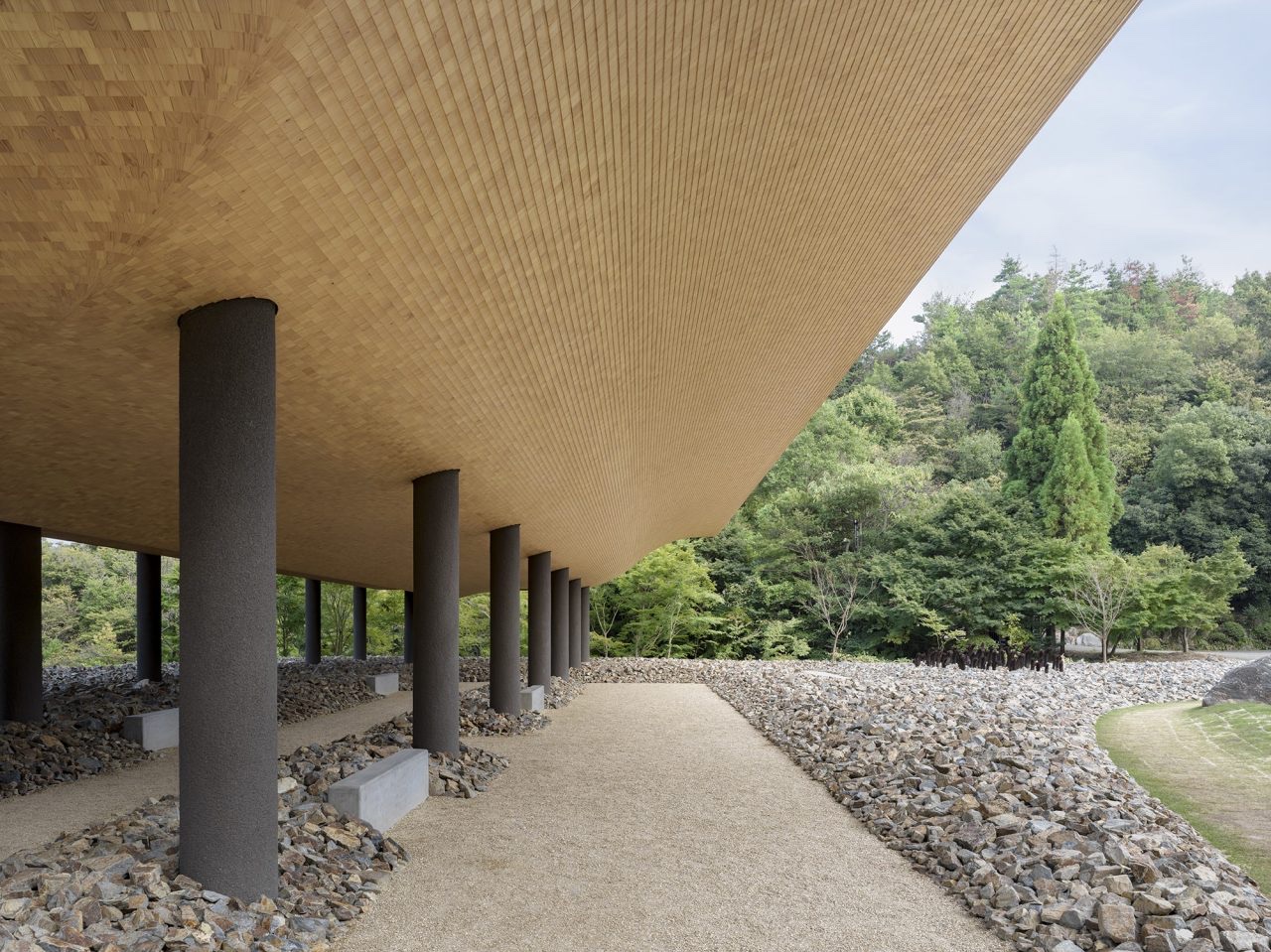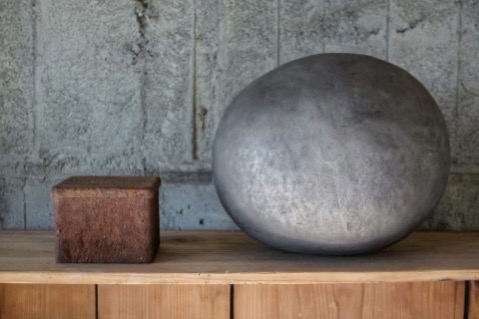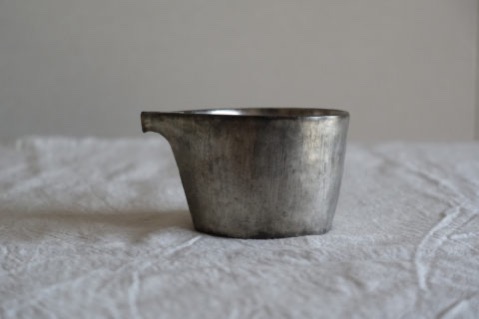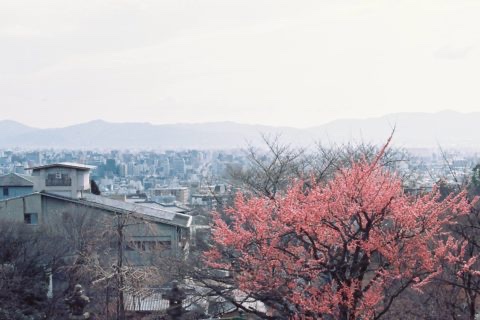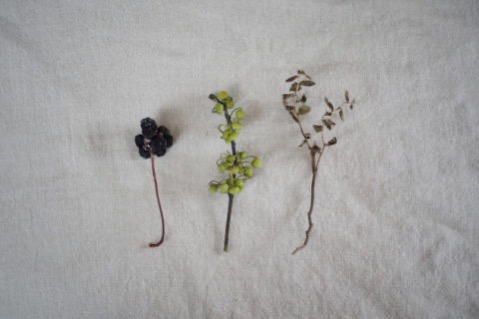
我們不時形容日本的建築物充滿「禪意」,不過究竟禪意是指甚麼呢?是強調光影變化,還是用了經年累月的素材,表現出來的侘寂美學?日本藝術家名和晃平,最近為位於廣島的神勝禪寺完成了境內一幢建築物「洸庭」也流瀉的濃濃的禪意。
屋頂以薄木板重重交疊而成的洸庭,外型有如一艘方舟,漂浮在以碎石築成的大海之上,海下是叢林與庭園。沿著碎石斜坡往上走,自光明的環境步入幽暗的方舟內,置身其中,猶如脫離了萬物,浮遊在塵世之外,細看石海波濤詳和,波光鱗影結結實實卻似幻擬真。洸庭是個入世的空間,讓人沉思冥想。
神勝禪寺建於1965年,以「禪及庭園美術館」為主題,內裡有著不有趣的建築,如由建築師中村昌生重現千利休的一疊半茶室的一來亭,以及藤森照信設計的寺務所等等,期望參觀者在遊走在庭園之間時,能夠抓住禪與日本藝術間微妙的關係。
‘Zen’ is a word commonly used when describing Japanese architecture, but what does it mean exactly? Does it refer to the path of light and shadow, the building material that has weathered through the years, or the sense of wabi-sabi that the building expresses? KOHTEI is a pavilion in Shinshoji in Hiroshima recently built by the Japanese artist Kōhei Nawa that also demonstrate a vivid impression of Zen.
The pavilion roof is made of numerous layers of thin plank, which are stacked into the shape of an ark that flows atop a sea of pebbles surrounded by bushes and gardens. Strolling on the slightly ascending gravel pathway will lead you to the bottom of the ark; entering the pavilion of dimness from a garden of bright natural light is like a gateway that allows one to depart from the mundane world. Tranquillity of the wave of gravel is solid but surreal at the same time. All these elements work together to make KOHTEI a space for visitors to engage in deeper thoughts and even meditation.
Shinshoji, which is themed as Shinshoji Zen Museum and Gardens, was built in 1965. The vast space is composed of various architectures with unique design, for instance, Ichirai-Tei, the tearoom designed by Sen no Rikyu recreated by the architect Masao Nakamuraa, as well as the temple office designed by Fujimori Terunobu. Walking through gardens of the temple area, visitors are invited to be infused in the intimacy between Zen and Japanese arts.
